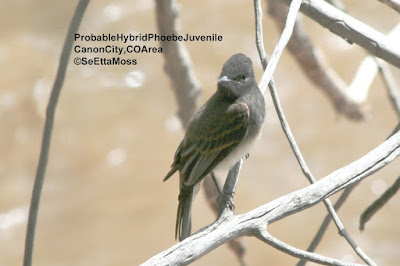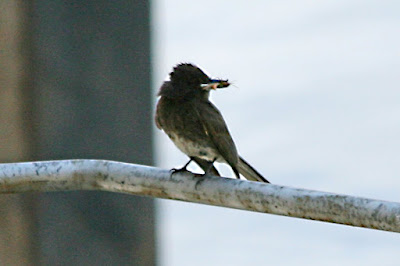This and the following video clips can be seen full screen by double-clicking on the video. The picture is reasonable good on my 14 inch laptop but I don't know how good it will be on larger screens. Finally, after refinding this possible hybrid BlackXEastern family, they are in a location where I could get some video of them--unfortunately it was close to dark and the light was poor. However, the video does show hard this phoebe parent works to feed it's hungry, growing fledglings. I say these are possible hybrid phoebes because I saw one adult feeding them the evening that they fledged, that was probably a hybrid (it appeared to likely be an intermediate plumaged phoebe I photographed this spring at this location that had a very brown streak on it's forehead. These birds are now back at the location where I first saw them not long after they fledged and after the parents moved them downstream several hundred yards when some fishermen invaded their space. The fledglin...


